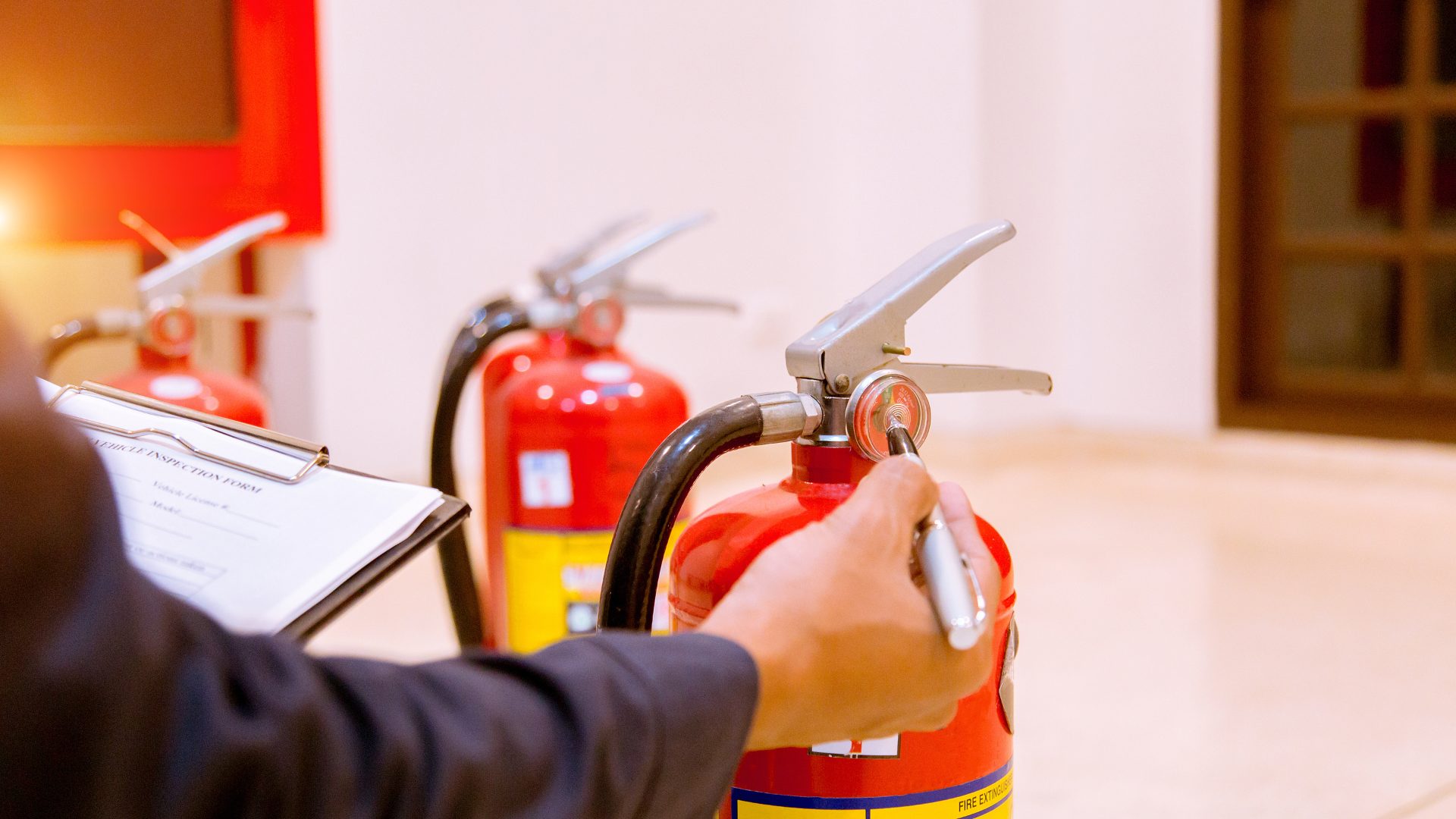In every workplace, whether it is an office, warehouse, or retail space, it is essential that a fire prevention plan is put in place to keep employees and other people safe as well as prevent fire hazards.
Today we will discuss how a fire prevention plan is beneficial to the workplace as well as what should be in your prevention plan to enforce fire safety policies.
What is a Fire Prevention Plan?
Jumping right into it, a fire prevention plan is a document that outlines what actions and procedures should be followed to prevent fires from occurring, as well as focusing on the protection of employees, customers, and others who are in the building if there is a fire emergency.
A normal fire prevention plan should include information on the types of potential fire hazards in the workplace, as well as what major fire hazards need to be at the top of the list, and the steps that need to be taken to prevent these from happening. Baytown fire protection services or similar services near you can assist you in doing the necessary inspections and coming up with a plan that fits your workplace.
Most importantly, within a fire prevention plan should be the correct procedures that need to be followed in the event that a fire does happen, whether it is natural or man-made.

What Are The Components of a Fire Prevention Plan?
To have a good fire prevention plan, you need to make sure that you have what is required for the safety of everyone.
This will be the main document followed and taught in employee training, so it is essential that you are able to convey all that needs to happen and what people need to look out for.
It means the difference between life and death, as people in those situations who do not have fire emergency plan procedures to follow might do the wrong thing or go the wrong way, so you have to stress to them what is important.
Fire Safety Policy and Procedures
A fire prevention plan should show the policies and procedures that are in place to prevent fires from happening inside the building.
Information on combustible materials, electrical equipment, open flames, heat-producing equipment, and any other major hazard that will need to be noted in these procedures.
Emergency Response Plan
If a fire was to happen inside the building, then this plan should outline what will need to happen to follow the proper protocol.
This includes calling the fire department, activating the alarm system, and getting the building evacuated for everyone who was inside.
Evacuation Procedures
This is how people should be evacuating the workplace with the location of the fire exits, using the emergency alarms, and going to the proper assembly areas.
With evacuation procedures, you should also set up a fire emergency response team who are well trained and educated in the proper evacuation procedures so they can help guide people during an evacuation as well as make sure that the rules are being followed.
Employee Training
Prevention plans should have the necessary training that all employees will need to go through to ensure that they are aware of exactly what they need to do in the event of a fire.
The training will let them know of the risks, such as how they need to handle combustible waste materials properly (if it applies), as well as how they can prevent fires from arising.
They will need training on how to use fire protection equipment such as fire extinguishers, and know what to do in the case of an evacuation, plus what other safety measures they can take e.g. knowing how to handle hazardous materials in a specific setting.
Maintenance and Inspection
Maintaining equipment and inspecting the workplace is important for preventing fires. Going around the building and identifying potential fire hazards, as well as inspecting equipment like fire extinguishers, heating, and ventilation systems, making sure the emergency and exit lights are working properly to guide people and any other potential fire hazards that could cause disaster.
Moreover, it is essential to ensure electrical compliance as it can significantly reduce the risks of fire hazards. Conforming to workplace electrical regulations encompasses regular inspections, proper electrical installation, and effective load management. These collective measures work in harmony to establish a safer electrical environment.
Start by assessing the electrical system control room and ensuring that appropriate safety precautions are in place. One main component of electrical safety is protecting the electrical system against short circuits and power surges. Installing appropriate surge protectors can help secure various machinery and forestall potential fire accidents. Furthermore, if your facility has many electrical control levers, it is essential to use cable lockouts (such as the Loto Cable from Total Lockout USA) to securely lock them, thus avoiding accidental activation of improperly prepared machinery and decreasing the danger of fire hazards in the workplace.
Besides that, consider hiring a certified fire protection company that can assist companies with safety tests of equipment and do any repairs that are essential in keeping people safe. They may also recommend other equipment that might be a good option for the space as well, this can include early fire detection systems which can give an early warning of a fire to stop it from spreading, as well as easy-to-use fire extinguishers to make it easier for everyone.
As a critical final step, you may also need to work with a professional commercial cleaning company to assist with inspections and maintenance. Their team can deliver comprehensive cleaning services aimed at identifying and mitigating fire hazards. For instance, they can carefully clean areas surrounding electrical equipment to prevent dust buildup, a potential fire risk. These experts can also inspect and maintain ventilation systems to ensure they pose no fire hazards.

What Are The Benefits of a Fire Prevention Plan?
Here are some very important benefits that a fire prevention plan can bring to your workplace, so you can feel safe in the knowledge that you have done everything you can.
Reducing The Risks of Fire
The most important one on this list is how these plans can make sure that fire risks are as low as possible.
This will protect everyone in the building, plus it provides minimal disruption and casualties if employees and others stick to it.
Enhanced Safety
Employees who are a lot more aware of the risks of fires can help with everyone’s safety.
This promotes a safer work environment and vigilant employees who know what to do if they see something that could cause a fire.
Protects The Reputation of The Business
If a business does not make sure that a fire prevention plan is in place for the safety of everyone inside, this can cause a lot of issues, especially if a fire were to happen and there was nothing put in place to help people.
A business that takes steps to actively keep its employees safe is a trustworthy business.
Protects The Property and its Assets
Equipment, inventory, and documents can be burned in a fire if there is no plan that can stop this from happening or save essential items.
A plan will help with keeping these safe, plus, for extra protection of important equipment and documents, businesses can put these items in fireproof boxes/rooms that will add an extra layer of protection.
Reduces Disruption to Business Operations
With fire comes disruption, and if there is nothing that can prevent fires from happening or not a clear exit strategy then business operations can be put on hold and it can take them a lot longer to get back on their feet.
A fire prevention plan will help with recovering the business a lot more quickly after a fire has happened.

Having a Duty of Care
The employees under your care need to know that they are safe when they walk through those doors, they need to know that at the end of the day, they will be able to go home and be with their families.
If you do not have a watertight fire prevention plan then you are putting all those under your care at risk and it will fall to you.
Conclusion
So, how does a fire prevention plan benefit your workplace? Hugely.
Every workplace should have a prevention plan to ensure that safety is being upheld and there are no surprises or issues along the way.
Vigilance is highly important, but you should also bring outside help in as well to follow on from training so that employees are always refreshed on what they need to do.
If you have new employees starting they should also know what steps they will have to take in the event of a fire, it should be included with their onboard training and they should also attend seminars with the other employees to keep updated.



